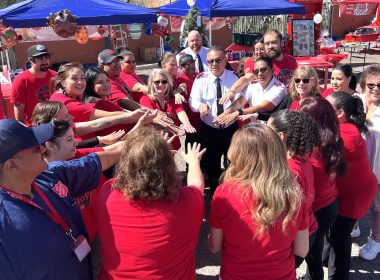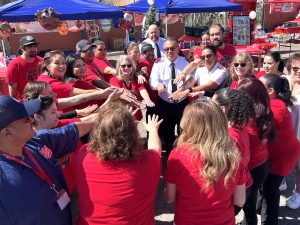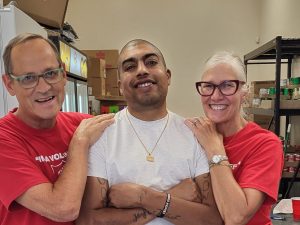The Army’s Hurricane Ike assistance effort still needs donations.
Just a month after Hurricane Ike’s landfall on Sept. 13 in the Gulf Coast, the disaster has all but disappeared from the national spotlight. With damages in U.S. coastal areas estimated at $27 billion, Ike is the third costliest hurricane of all time, behind Hurricanes Andrew and Katrina, and responsible for 177 deaths, including 96 in the U.S. However, with economic issues and the presidential campaign dominating the news, fundraising for disaster relief—vitally needed—has ceased to be a priority.
With over 20 years of experience in disaster work with The Salvation Army’s Western Territory, Mike Gelski, Emergency Disaster Services (EDS) coordinator for Denver, Colo., went to Houston as part of a Western Territory unified command relief team. He served as the deputy incident commander to provide direction to the three Texas command headquarters in Beaumont, Pasadena/Houston, and Galveston. The unified command acted as a resource manager over all operation stracking and refreshing canteens, personnel and supplies in the field.
“It is impossible to capture the devastation,” Gelski said. “Piles of debris appliances, furniture, possessions fill the streets. In one community, Seabrook, 300 of 400 homes have three feet of mud inside, and it’s only one of many communities destroyed along the Gulf Coast.”
Gelski talked with one Seabrook family with two children, a teenager and a 5-year-old. The youngest was having problems sleeping and kept saying he wanted to go home. His mother told Gelski it hadn’t yet been determined if their house was structurally sound so they were living in an apartment, paying for it and their mortgage.
“If you [The Salvation Army] weren’t here,” the mother told Gelski, “I don’t know how I would feed my family.”
Gelski noted, “These people were not poor; they probably didn’t think they would ever need help from The Salvation Army.”
Emotional and spiritual care
Gelski said the emotional and spiritual care teamsa few who came from the Army in Canada and Mexico were just as important as the practical assistance.
“While lines formed for the canteens, we also saw lines of people waiting to have someone pray with them,” he said. “These teams became a mainstay for the affected communities; they’re still there.”
Gelski recalled talking to one team member who counseled an individual that found, beneath the debris, a mother and her kids tied, dead, to a tree. They believe she was trying to save her family.
“The emotional and spiritual care is clearly the most important part of this relief,” Gelski said. “People see the red Salvation Army shirts and just collapse into our arms, sobbing.”
Besides providing support and meals, The Salvation Army has also distributed food boxes, clean-up kits and gift cards to families. As money dwindles, however, services are being scaled back.
Back in Denver, Gelski said much exertion is still required in the Gulf Coast.
“We need more donations,” Gelski said. “We absolutely have to have financial support.”
To donate, call 1-800-SAL-ARMY or go to the Southern Territory’s website at: uss.salvationarmy.org. A $100 donation can feed a family of four for two days, provide two cases of drinking water and one household cleanup kit.












